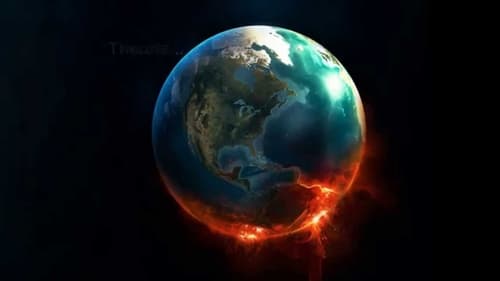
Executive Producer
Egypt's Great Pyramid may be humanity's greatest achievement: a skyscraper of stone built without computers or complex machinery. This super-sized tomb has fascinated historians and archaeologists for centuries, but exactly how the ancient Egyptians finished the monument and fitted its two and a half million blocks in a quarter of a century has long remained an enigma. Today the secrets of the pyramid are finally being revealed thanks to a series of new findings. At the foot of the monument, archaeologists are uncovering the last surviving relic of the pharaoh Khufu, whose tomb it is: a huge ceremonial boat buried in flat-pack form for more than 4500 years. It's a clue that points to the important role that ships and water could have played in the pyramids' construction. This documentary follows investigations that reveal how strong the link between pyramids and boats is. It's a story of more than how Egypt built a pyramid: it's about how the pyramid helped build the modern world.

Executive Producer
At any given moment hundreds of people are soaring above us in a 747. From the moment the very first jumbo jet took off in 1969, it has been the aircraft against which all others are judged. But its 45-year journey has been anything but smooth. This is the definitive story of the Boeing 747, from its milestones and triumphs to its turning points and disasters. Witness its history through rare archival footage and tales from pilots, engineers, designers, and passengers who were there when it all began.

Executive Producer

Executive Producer
National Geographic Channel se aventura en un tiempo remoto, un tiempo en el que la Tierra estaba poblada por gigantes: alacranes del tamaño de los lobos, libélulas del tamaño de águilas, ciempiés de dos metros de largo y bosques de helechos de casi 30 metros de altura. Un tiempo en el que nuestro planeta pasó de ser una bola de roca líquida hirviendo a convertirse en un páramo helado con capas de hielo de hasta de tres kilómetros de espesor. Un escenario, que no es fruto de la ciencia ficción, sino la crónica exacta de la formación de nuestro propio planeta.

Producer
National Geographic Channel se aventura en un tiempo remoto, un tiempo en el que la Tierra estaba poblada por gigantes: alacranes del tamaño de los lobos, libélulas del tamaño de águilas, ciempiés de dos metros de largo y bosques de helechos de casi 30 metros de altura. Un tiempo en el que nuestro planeta pasó de ser una bola de roca líquida hirviendo a convertirse en un páramo helado con capas de hielo de hasta de tres kilómetros de espesor. Un escenario, que no es fruto de la ciencia ficción, sino la crónica exacta de la formación de nuestro propio planeta.

Executive Producer
The sinking of the Titanic was far more than a simple accident. It was a tragedy that could have been prevented. It was the result of a long chain of mistakes: a fatal series of avoidable human errors that sent the Titanic and more than half of her passengers to their watery graves. Based around the official inquiry held immediately after the event, plus evidence that's come to light since the wreck of the Titanic was discovered in 1985, National Geographic, in this drama-documentary special, answers the question: Who Sank the Titanic?

Executive Producer
El 10 de abril de 1912, el RMS Titanic se embarcó en su viaje inaugural, navegando desde Southampton, Inglaterra, a la ciudad de Nueva York. Uno de los transatlánticos de pasajeros más grandes y lujosos de la época, el Titanic también estaba equipado con compartimentos estancos, lo que llevó a muchos a considerar el barco insumergible; un marinero anónimo afirmó que "Dios mismo no podía hundir este barco". El 14 de abril, sin embargo, el barco chocó contra un iceberg y al día siguiente se hundió temprano. Murieron unas 1.500 personas.





